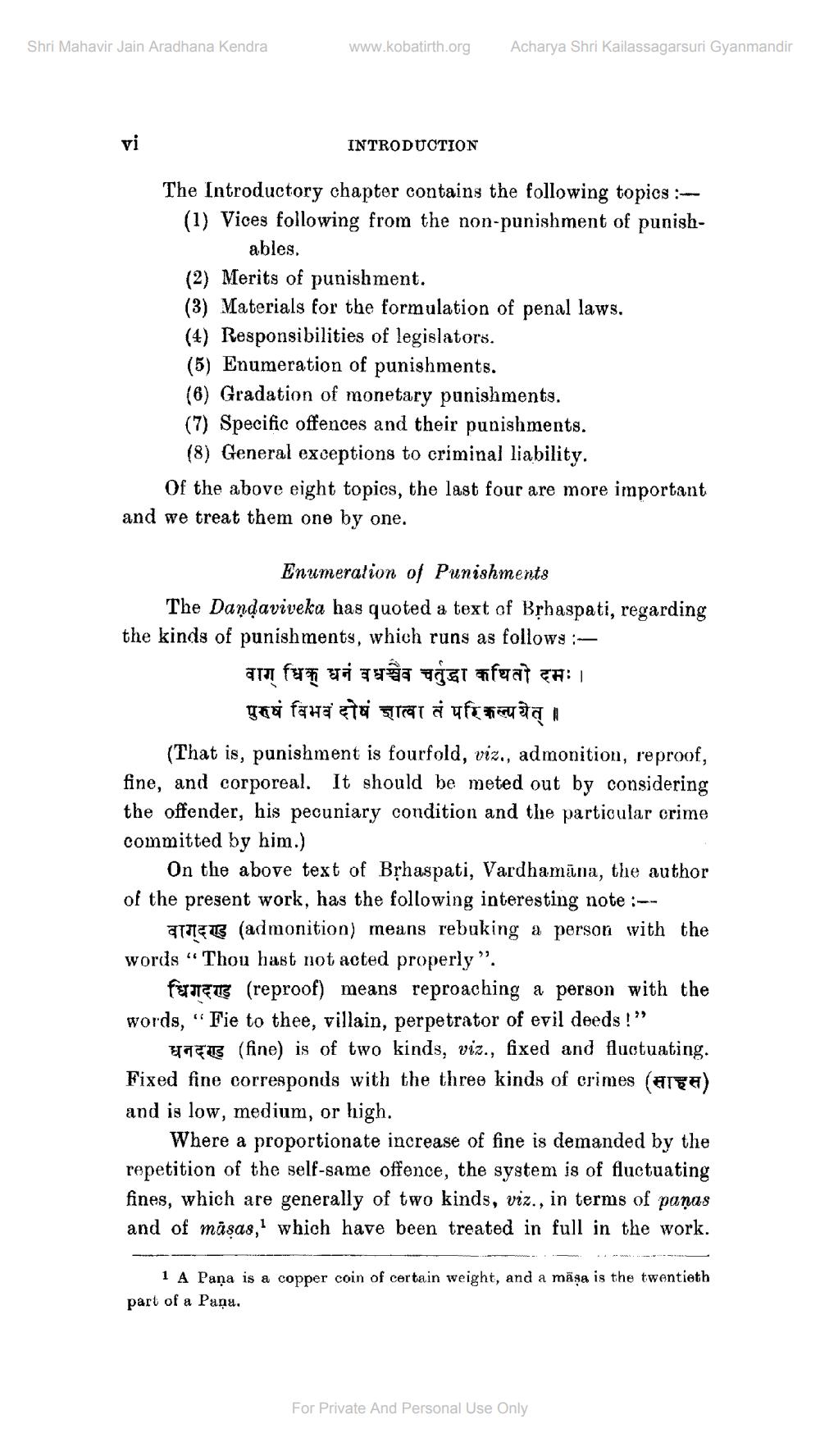________________
Shri Mahavir Jain Aradhana Kendra
vi
www.kobatirth.org
INTRODUCTION
Acharya Shri Kailassagarsuri Gyanmandir
The Introductory chapter contains the following topics :(1) Vices following from the non-punishment of punishables.
(2) Merits of punishment.
(3) Materials for the formulation of penal laws.
(4) Responsibilities of legislators.
(5) Enumeration of punishments.
(6) Gradation of monetary punishments.
(7) Specific offences and their punishments.
(8) General exceptions to criminal liability.
Of the above eight topics, the last four are more important and we treat them one by one.
Enumeration of Punishments
The Dandaviveka has quoted a text of Bṛhaspati, regarding the kinds of punishments, which runs as follows:
वाग् धिक् धनं बधश्चैव चर्तुद्धा कथितो दमः । पुरुषं विभवं दोषं ज्ञात्वा तं परिकल्पयेत् ॥
(That is, punishment is fourfold, viz., admonition, reproof, fine, and corporeal. It should be meted out by considering the offender, his pecuniary condition and the particular crime committed by him.)
On the above text of Bṛhaspati, Vardhamana, the author of the present work, has the following interesting note:-- (admonition) means rebuking a person with the words "Thou hast not acted properly".
fan (reproof) means reproaching a person with the words, "Fie to thee, villain, perpetrator of evil deeds!" (fine) is of two kinds, viz., fixed and fluctuating. Fixed fine corresponds with the three kinds of crimes (ar) and is low, medium, or high.
Where a proportionate increase of fine is demanded by the repetition of the self-same offence, the system is of fluctuating fines, which are generally of two kinds, viz., in terms of panas and of masas, which have been treated in full in the work.
1 A Pana is a copper coin of certain weight, and a maşa is the twentieth part of a Pana.
For Private And Personal Use Only




